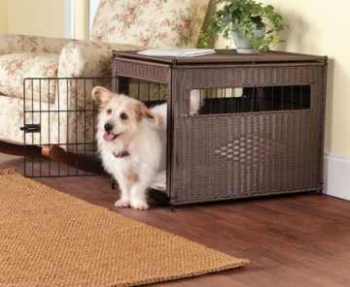Animals have their own habitats. Take them out of their habitats and they’ll start feeling uncomfortable, even become sick. This is why there are those who are strong advocates against keeping animals in captivity in zoos. For domesticated dogs, however, they’re used to being in a man’s house. They can freely roam around the property even without a leash.
For some well-meaning pet owners, they want to give their canine companion that feeling of living in a den by getting them a crate or a cage. Although cages are not necessarily substitutes for a dog’s lair, they can be the next best thing to it. The challenge for the owner is how to train his four-legged friend to be comfortable in a cage.
If you’re planning to get your dog a cage, here are some helpful tips on how to crate-train him:
Get a crate big enough for him – The size of the crate you’ll get doesn’t have to be very large, but it should at least allow your pooch to take at least a couple of paces inside it. It also has to be tall enough so that his head doesn’t hit the top part when he’s in a sitting position (compared to humans, dogs are taller when they sit).
Put something inside that will entice him to step in – It can either be his favorite toy or food. The key is to get him to walk inside the cage without forcing him. Once he’s inside, don’t close the crate door just yet. Allow him to get used to being there. It may take several attempts before he starts getting comfortable in it, so patience is one virtue you should really have while training him.
Provide creature comforts inside – Depending on what your dog’s used to, you can lay a thick cloth on the floor of the cage and put pillows there as well. If you’ve decided that you’ll also feed him inside the crate, put his feeding bowl in there as well.
Make him get used to being carried while inside the crate – One of the reasons for getting a dog a cage is to make him comfortable being carried around while inside it. Therefore, part of your crate-training is to lift the cage with him inside it and transfer it to different locations in your house. By doing this, if you need to take him with you in a car, he will no longer feel uncomfortable or even disoriented.
These are the basic steps in crate-training your pet pooch (if he barks excessively during the training, you can stop dog barking by using anti-barking collars). You can also enlist the help of someone who has crate-trained his own dog to help you out in case your attempts are not too successful.

